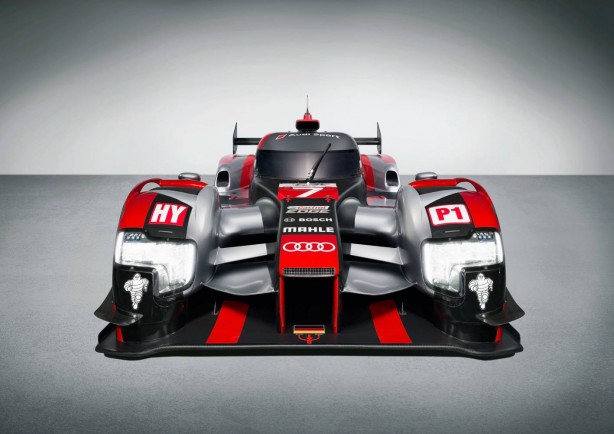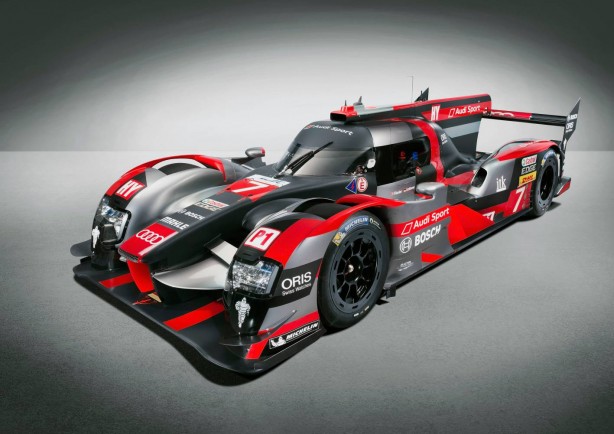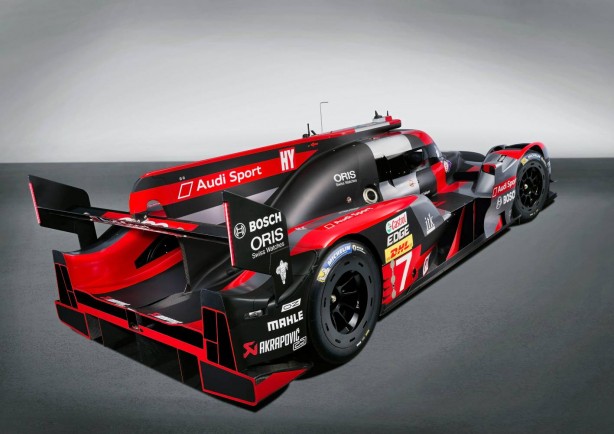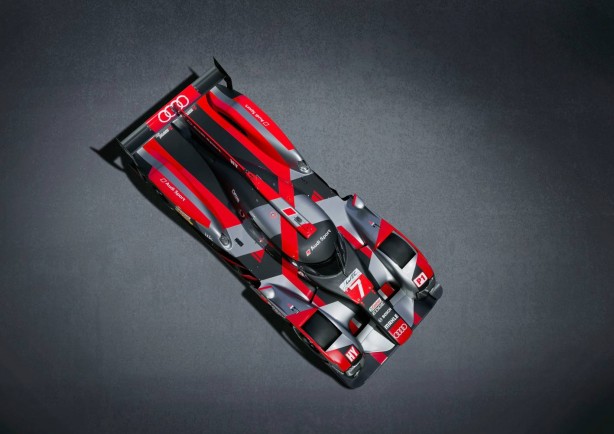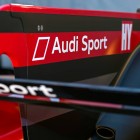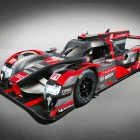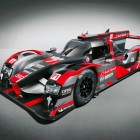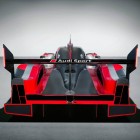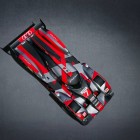Welcome the R18, Audi’s latest LMP1 racer destined to break records at this year’s Le Mans 24 hour.
The innovative vehicle comes redesigned from the ground up with Audi claiming that it has “almost nothing in common with its predecessor”.
At the heart of the beast lies a highly efficient hybrid TDI powertrain, capable of producing 746kW while also carrying a 10% reduction in fuel consumption. Leading up to 2015, Audi used a flywheel based electrokinetic storage system for hybrid boost, this year a lithium accumulator has been used tripling the amount of energy that can be recuperated.
The change comes as a result of switching to the 6-megajoule class. In this series, automakers are entitled to a 50 percent increase in recovered energy, the highly efficient electric motors make it possible for Audi to fully utilize this rule.
“The result is a race car that manages energy even more effectively than before. This is an objective we’re pursuing for our road-going automobiles as well,” says Head of Audi Motorsport Dr. Wolfgang Ullrich.
Complementing the new powertrain is Audi’s highly optimized six-speed transmission which provides a good gear ratio spread with minimal rpm jumps. Previously Audi LMP1 vehicles featured a seven-speed transmission, the drop to six meant a further reduction in weight.
Looking at the new Audi R18, it is immediately clear to us that aerodynamics played a significant role in the vehicles design. Through advanced computer simulation, every panel has been meticulously designed to cheat air around the vehicle, directing the flow between the wheel wells, across the top of the vehicle and into the cooling ducts.
The proportions of the front end, cabin and overall length have changed with the conspicuous nose of the race car being slimmer than before.
“The new proportions influence weight distribution and aerodynamics,” explains Jörg Zander, Head of Engineering at Audi Sport. Zander goes on to say: “Our most important objective was to improve airflow. In this process, vortices must be avoided, as this costs energy”.
Audi claims the R18 directs airflow even more effectively as it approaches the undertray. At the rear, the air exits again through the diffuser. Together they produce a significant part of the vehicle’s downforce, which is beneficial in cornering.
Audi developed a new monocoque, modified the proportions within the prescribed maximum length of 4,650 millimetres, and designed all the component assemblies accordingly.
Other components have also been privy to innovations. The wishbones are now used for wheel guidance, the lift and roll spring-damper elements are actuated via pushrods and the suspension kinematics have been optimized. Optimum balance of the race car in all speed ranges is guaranteed by balancers of the Linked Suspension System (LSS) in the chassis.
In addition, the actuators from various systems help reduce weight. While previous-generation cars use electrical actuators for braking, transmission and engine systems, the new Audi R18 uses a high-pressure central hydraulic system.
Despite all the added innovations the R18 still weighs in less than 875kg.
The current V6 TDI consumes 32.4 percent less fuel than the first generation in 2011. This progress is even more impressive when compared to the team’s original year back in 2006 where Audi used TDI technology for the first time.
The trusty TDI engine has net Audi eight victories, a distance record, plus two world championship titles. Today, Audi’s LMP1 race car with the current engine uses 46.4 percent less fuel at Le Mans while still achieving a lap time ten to 15 seconds better than a decade ago.
Despite all the changes, safety hasn’t been neglected. The R18 gets Matrix LED headlights combined with laser light technology which optimises the light beam for cars traveling up to 340 km/h. There is also a lightweight and energy-efficient camera system in combination with an ultramodern AMOLED screen which serves as a digital rearview mirror. In the event an accident cannot be avoided, the passive safety systems take over. The monocoque consists of a high-strength CFRP structure with an aluminium honeycomb core and has a front crash nose for energy absorption.
With all the latest tech added to the Audi R18, it will be interesting to see how it will fare up against the likes of Porsche and Toyota. Le Mans will certainly be interesting this year.
 ForceGT.com Car News, Car Reviews, Video Reviews, Tuning and much more.
ForceGT.com Car News, Car Reviews, Video Reviews, Tuning and much more. 